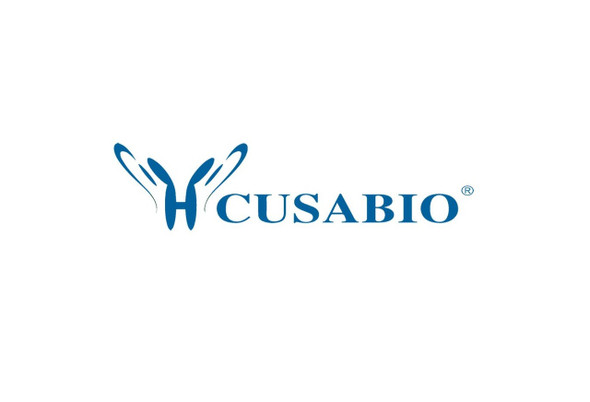Cusabio Virus & Bacteria Recombinants
Recombinant Streptococcus pneumoniae serotype 2 Pneumolysin (ply) | CSB-EP312102FNF
- SKU:
- CSB-EP312102FNF
- Availability:
- 3 - 7 Working Days
Description
Recombinant Streptococcus pneumoniae serotype 2 Pneumolysin (ply) | CSB-EP312102FNF | Cusabio
Alternative Name(s): Thiol-activated cytolysin
Gene Names: ply
Research Areas: Others
Organism: Streptococcus pneumoniae serotype 2 (strain D39 / NCTC 7466)
AA Sequence: ANKAVNDFILAMNYDKKKLLTHQGESIENRFIKEGNQLPDEFVVIERKKRSLSTNTSDISVTATNDSRLYPGALLVVDETLLENNPTLLAVDRAPMTYSIDLPGLASSDSFLQVEDPSNSSVRGAVNDLLAKWHQDYGQVNNVPARMQYEKITAHSMEQLKVKFGSDFEKTGNSLDIDFNSVHSGEKQIQIVNFKQIYYTVSVDAVKNPGDVFQDTVTVEDLKQRGISAERPLVYISSVAYGRQVYLKLETTSKSDEVEAAFEALIKGVKVAPQTEWKQILDNTEVKAVILGGDPSSGARVVTGKVDMVEDLIQEGSRFTADHPGLPISYTTSFLRDNVVATFQNSTDYVETKVTAYRNGDLLLDHSGAYVAQYYITWDELSYDHQGKEVLTPKAWDRNGQDLTAHFTTSIPLKGNVRNLSVKIRECTGLAWEWWRTVYEKTDLPLVRKRTISIWGTTLYPQVEDKVEND
Source: E.coli
Tag Info: N-terminal 10xHis-SUMO-tagged and C-terminal Myc-tagged
Expression Region: 2-471aa
Sequence Info: Full Length of Mature Protein
MW: 72.8 kDa
Purity: Greater than 90% as determined by SDS-PAGE.
Relevance: Sulfhydryl-activated toxin that causes cytolysis by forming pores in cholesterol containing host membranes. After binding to target membranes, the protein undergoes a major conformation change, leading to its insertion in the host membrane and formation of an oligomeric pore complex. Cholesterol may be required for binding to host membranes, membrane insertion and pore formation. Can be reversibly inactivated by oxidation
Reference: "Genome sequence of Avery's virulent serotype 2 strain D39 of Streptococcus pneumoniae and comparison with that of unencapsulated laboratory strain R6." Lanie J.A., Ng W.-L., Kazmierczak K.M., Andrzejewski T.M., Davidsen T.M., Wayne K.J., Tettelin H., Glass J.I., Winkler M.E. J. Bacteriol. 189:38-51(2007)
Storage: The shelf life is related to many factors, storage state, buffer ingredients, storage temperature and the stability of the protein itself. Generally, the shelf life of liquid form is 6 months at -20?/-80?. The shelf life of lyophilized form is 12 months at -20?/-80?.
Notes: Repeated freezing and thawing is not recommended. Store working aliquots at 4? for up to one week.
Function: Sulfhydryl-activated toxin that causes cytolysis by forming pores in cholesterol containing host membranes. After binding to target membranes, the protein undergoes a major conformation change, leading to its insertion in the host membrane and formation of an oligomeric pore complex. Cholesterol may be required for binding to host membranes, membrane insertion and pore formation. Can be reversibly inactivated by oxidation (By similarity).
Involvement in disease:
Subcellular Location: Secreted, Host cell membrane, Multi-pass membrane protein
Protein Families: Thiol-activated cytolysin family
Tissue Specificity:
Paythway:
Form: Liquid or Lyophilized powder
Buffer: If the delivery form is liquid, the default storage buffer is Tris/PBS-based buffer, 5%-50% glycerol. If the delivery form is lyophilized powder, the buffer before lyophilization is Tris/PBS-based buffer, 6% Trehalose, pH 8.0.
Reconstitution: We recommend that this vial be briefly centrifuged prior to opening to bring the contents to the bottom. Please reconstitute protein in deionized sterile water to a concentration of 0.1-1.0 mg/mL.We recommend to add 5-50% of glycerol (final concentration) and aliquot for long-term storage at -20?/-80?. Our default final concentration of glycerol is 50%. Customers could use it as reference.
Uniprot ID: Q04IN8
HGNC Database Link: N/A
UniGene Database Link: N/A
KEGG Database Link: KEGG
STRING Database Link: STRING
OMIM Database Link: N/A









